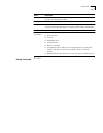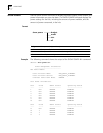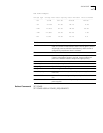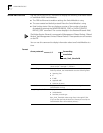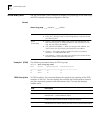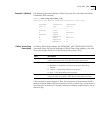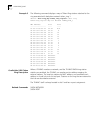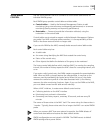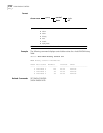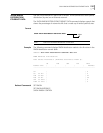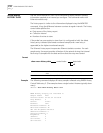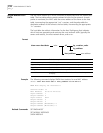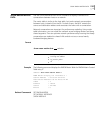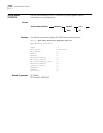
SHOW RMON CONTROL
2-369
SHOW RMON
CONTROL
Use the SHOW RMON CONTROL command to show control table entries for
individual RMON groups.
Each RMON group provides control tables and data tables:
■
Control tables
— Used by the Network Management Station to add
monitoring (using more resources and degrading performance) or to remove
monitoring (freeing memory and improving performance)
■
Data tables
— Store and provide the information collected, using the
instructions in the control table
Control tables are structured to support multiple Network Management Stations
per probe. If an NMS configures probe resources, it is the responsibility of that
NMS to free those resources when no longer used.
If you use the DMM as the NMS, manually delete unused control table entries.
Each control table entry has:
■
A table index
■
An owner string identifying the NMS that created the control entry
■
Status of the control entry
■
Other objects that define the behavior of the group to be monitored
The history control table defines which interface (MAC) to monitor, the sampling
interval, the number of history reports the MAC stores for a sampling interval, and
so on.
If you enter a valid control entry, the DMM creates or appends the associated data
table. When an NMS no longer requires the collected data, it may free up the
resources used by invalidating the control entry. When this occurs, the probe
removes the control entry and all of the data associated with it, thus freeing
resources for other monitoring functions. Again, if you use the DMM as the NMS,
you must delete unused control table entries manually.
When a MAC initializes, it creates some default control entries:
■
Collecting statistics on the MAC interface
■
Monitoring host and matrix information
■
Generating two history reports, one every 30 seconds, and one every 30
minutes
The owner of these entries is the MAC itself. The owner string for these entries is
“monitor.” Typically, these entries exist for as long as the MAC is an active RMON
probe.
When you move an NMC from one network to another, the DMM deletes all
control and data tables and restores the basic default entries.
RMON configurations are not stored in NVRAM. The DMM reverts to default
RMON settings after a power failure.



